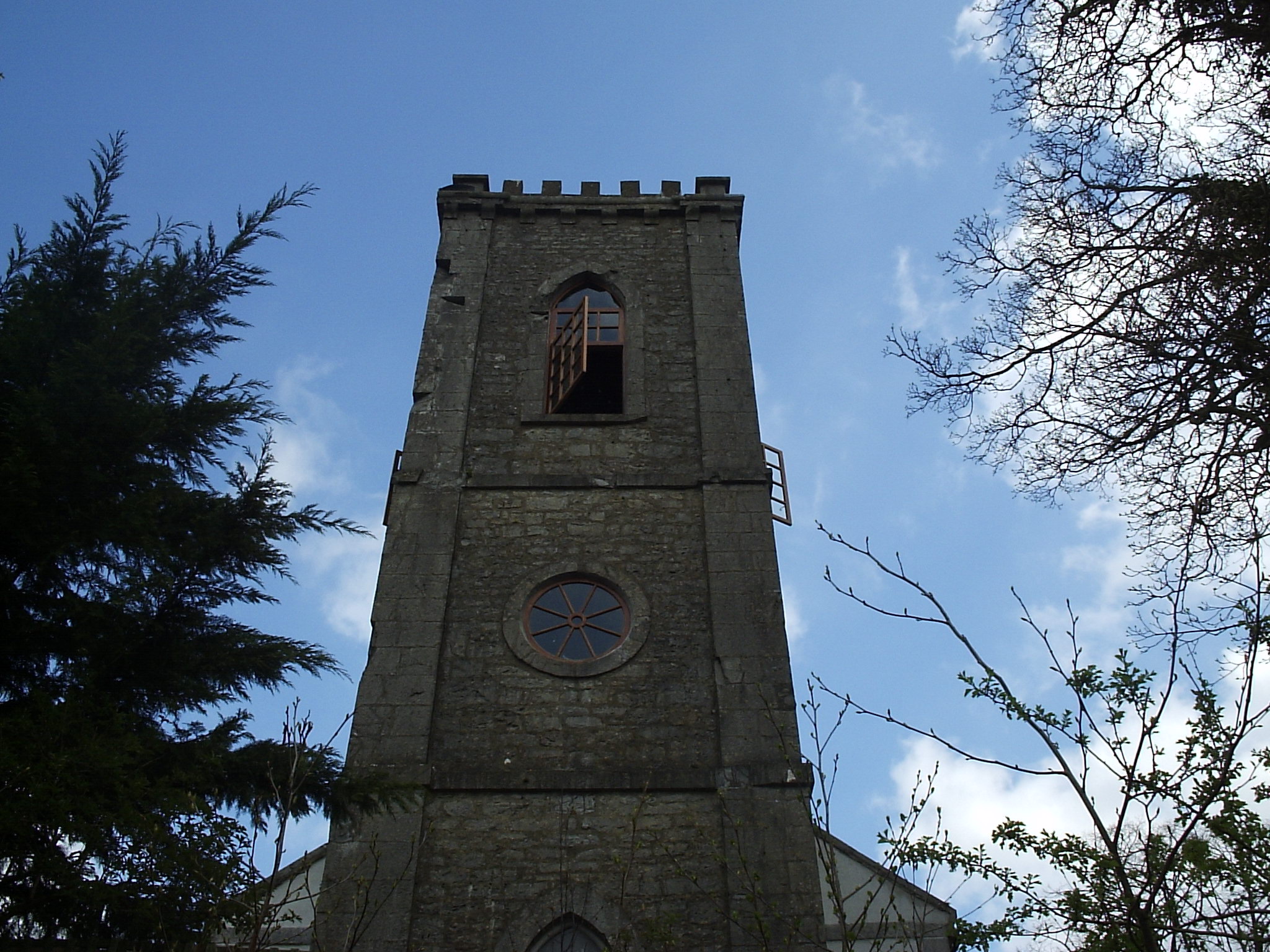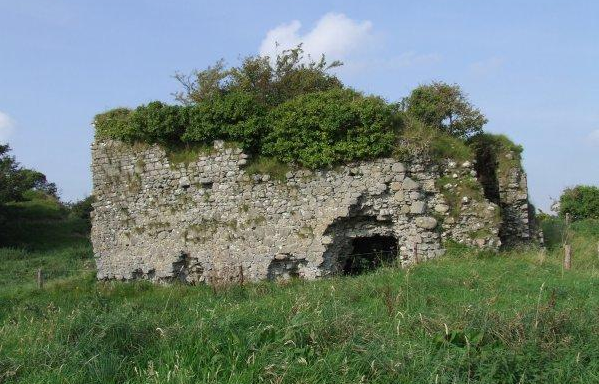|
Kilbride, County Westmeath
Kilbride is a townland in County Westmeath, Ireland. The townland is located in the civil parish of the same name. The town of Dalystown lies to the west of the area, with Rochfortbridge and the townlands of Castlelost and Castlelost West bordering the south. The De Profundis Stone The De Profundis Stone is a recumbent stone located in the townland of Kilbride, County Westmeath, Kilbride, County Westmeath, Ireland, near the town of Mullingar. The stone was possibly used to mark an ancient graveyard, as was sometimes customa ... is located in the townland. References Townlands of County Westmeath {{Ireland-geo-stub ... [...More Info...] [...Related Items...] OR: [Wikipedia] [Google] [Baidu] |
Townland
A townland ( ga, baile fearainn; Ulster-Scots: ''toonlann'') is a small geographical division of land, historically and currently used in Ireland and in the Western Isles in Scotland, typically covering . The townland system is of Gaelic origin, pre-dating the Norman invasion, and most have names of Irish origin. However, some townland names and boundaries come from Norman manors, plantation divisions, or later creations of the Ordnance Survey.Connolly, S. J., ''The Oxford Companion to Irish History, page 577. Oxford University Press, 2002. ''Maxwell, Ian, ''How to Trace Your Irish Ancestors'', page 16. howtobooks, 2009. The total number of inhabited townlands in Ireland was 60,679 in 1911. The total number recognised by the Irish Place Names database as of 2014 was 61,098, including uninhabited townlands, mainly small islands. Background In Ireland a townland is generally the smallest administrative division of land, though a few large townlands are further divided into ... [...More Info...] [...Related Items...] OR: [Wikipedia] [Google] [Baidu] |
County Westmeath
"Noble above nobility" , image_map = Island of Ireland location map Westmeath.svg , subdivision_type = Country , subdivision_name = Ireland , subdivision_type1 = Province , subdivision_name1 = , subdivision_type2 = Region , subdivision_name2 = Eastern and Midland , seat_type = County town , seat = Mullingar , parts_type = Largest settlement , parts = Athlone , leader_title = Local authority , leader_name = Westmeath County Council , leader_title2 = Dáil constituencies , leader_name2 = , leader_title3 = EP constituency , leader_name3 = Midlands–North-West , area_total_km2 = 1840 , area_rank = 21st , population_total = 95,840. , population_as_of = 2022 , population_footnotes = , population_density_km2 = auto , population_rank = 22nd , blank_ ... [...More Info...] [...Related Items...] OR: [Wikipedia] [Google] [Baidu] |
Ireland
Ireland ( ; ga, Éire ; Ulster Scots dialect, Ulster-Scots: ) is an island in the Atlantic Ocean, North Atlantic Ocean, in Northwestern Europe, north-western Europe. It is separated from Great Britain to its east by the North Channel (Great Britain and Ireland), North Channel, the Irish Sea, and St George's Channel. Ireland is the List of islands of the British Isles, second-largest island of the British Isles, the List of European islands by area, third-largest in Europe, and the List of islands by area, twentieth-largest on Earth. Geopolitically, Ireland is divided between the Republic of Ireland (officially Names of the Irish state, named Ireland), which covers five-sixths of the island, and Northern Ireland, which is part of the United Kingdom. As of 2022, the Irish population analysis, population of the entire island is just over 7 million, with 5.1 million living in the Republic of Ireland and 1.9 million in Northern Ireland, ranking it the List of European islan ... [...More Info...] [...Related Items...] OR: [Wikipedia] [Google] [Baidu] |
Civil Parishes In Ireland
Civil parishes () are units of territory in the island of Ireland that have their origins in old Gaelic territorial divisions. They were adopted by the Anglo-Norman Lordship of Ireland and then by the Elizabethan Kingdom of Ireland, and were formalised as land divisions at the time of the Plantations of Ireland. They no longer correspond to the boundaries of Roman Catholic or Church of Ireland parishes, which are generally larger. Their use as administrative units was gradually replaced by Poor Law Divisions in the 19th century, although they were not formally abolished. Today they are still sometimes used for legal purposes, such as to locate property in deeds of property registered between 1833 and 1946. Origins The Irish parish was based on the Gaelic territorial unit called a '' túath'' or '' Trícha cét''. Following the Norman invasion of Ireland, the Anglo-Norman barons retained the ''tuath'', later renamed a parish or manor, as a unit of taxation. The civil parish ... [...More Info...] [...Related Items...] OR: [Wikipedia] [Google] [Baidu] |
Kilbride, County Westmeath (civil Parish)
Kilbride () is a civil parish in County Westmeath, Ireland. It is located about south of Mullingar. Kilbride is one of 10 civil parishes in the barony of Fartullagh in the Province of Leinster. The civil parish covers . Kilbride civil parish comprises 7 townlands: Beggstown, Fearmore, Gibbonstown, Kilbride, Moorerow or Tonlegee, Simonstown, and Whitewell. The neighbouring civil parishes are: Moylisker and Enniscoffey to the north, Pass of Kilbride to the east, Castlelost to the south and Carrick Carrick is an Anglicised version of ''creag/carraig'', Gaelic for "rock", and may refer to: People *Carrick (surname) * Donnchadh, Earl of Carrick (died 1250), Scottish Mormaer and first Earl of Carrick * Marjorie of Carrick (1256–1292), ... to the west. [...More Info...] [...Related Items...] OR: [Wikipedia] [Google] [Baidu] |
Dalystown
Dalystown () is a village in Carrick, County Westmeath, Ireland. It is located in the south of the county on the N52 road, to the north of Tyrrellspass and Rochfortbridge. The village contains a National school, and a public house. Lough Ennell is to the north of the village. Dalystown House A two story house dating back to c1820 stands in the village. The building features a natural slate roof, rendered chimney stacks A chimney is an architectural ventilation structure made of masonry, clay or metal that isolates hot toxic exhaust gases or smoke produced by a boiler, stove, furnace, incinerator, or fireplace from human living areas. Chimneys are ty ... and a number of stone outbuildings. See also * List of towns and villages in Ireland * Carrick, County Westmeath References Towns and villages in County Westmeath {{Westmeath-geo-stub ... [...More Info...] [...Related Items...] OR: [Wikipedia] [Google] [Baidu] |
Rochfortbridge
Rochfortbridge () is a village in County Westmeath, Ireland. The village is located at the intersection of the R400 and the R446 (formerly the N6) roads. As of the 2016 census, the population of Rochfortbridge was 1,473. History Rochfortbridge is spread between the townlands of Castlelost and Rahanine, both within Castlelost parish, which was inhabited at least as early as 590 AD by monks under Mo Chutu (later St. Carthage). The village was originally known as Beggar's Bridge, supposedly after a beggar who died at a river crossing; enough money was found in his pockets to build a bridge. The village proper was set out 1700 by Robert Rochfort, MP for Westmeath from 1651 to 1727. As part of the village building programme, Rochfort financed and built a new bridge over the River Derry, giving the village its new name. Following the death of Rochfort in 1727, the village was controlled by his son George Rochfort. George died just three years later, in 1730, and ... [...More Info...] [...Related Items...] OR: [Wikipedia] [Google] [Baidu] |
Castlelost
Castlelost is a townland in County Westmeath, Ireland. The townland is located in the civil parish of Castlelost. The R446 regional road runs through the middle of the area, and a section of the R400 regional road links the townland with the M6 motorway. The western side of the town of Rochfortbridge lies in the townland, with the east laying in the neighbouring townland of Rahanine. St. Joseph's School, and the Church of the Immaculate Conception stand in the townland, serving the town of Rochfortbridge and the surrounding townlands. The townland is bordered by Castlelost West and Clontytallon to the west, Derry to the north, Farthingstown and Oldtown to the south and Gortumly and Rahanine to the east. The townland is recorded on the Griffith Valuation in 1868, with 37 tenants living in the area. Castlelost Castle A ruined castle dating back to the Norman invasion of Ireland The Anglo-Norman invasion of Ireland took place during the late 12th century, when A ... [...More Info...] [...Related Items...] OR: [Wikipedia] [Google] [Baidu] |
Castlelost West
Castlelost West is a townland in County Westmeath, Ireland. The townland is located in the civil parish of the same name. The R446 regional road runs through the south of the area. The townland of Castlelost lies to the east and contains the town of Rochfortbridge. The town of Tyrrellspass stands to the west of the townland. The townland is bordered by Castlelost to the east, Clontytallon, and Kilbride to the north, Gneevebane, and Oldtown to the south, and Piercetown to the west. West House A two-story 18th Century house stands in the townland, dating back to c1760. Other historic houses in the area include Far View House, dating back to 1820 See also * Castlelost * Castlelost (civil parish) * Rochfortbridge Rochfortbridge () is a village in County Westmeath, Republic of Ireland, Ireland. The village is located at the intersection of the R400 road (Ireland), R400 and the R446 road, R446 (formerly the N6 road (Ireland), N6) roads. As of the 2016 cen ... Reference ... [...More Info...] [...Related Items...] OR: [Wikipedia] [Google] [Baidu] |
De Profundis Stone
The De Profundis Stone is a recumbent stone located in the townland of Kilbride, County Westmeath, Kilbride, County Westmeath, Ireland, near the town of Mullingar. The stone was possibly used to mark an ancient graveyard, as was sometimes customary in Ireland. The monument takes its name from a local tradition of stopping a funerary procession at the stone, and reciting the "De Profundis" (a colloquial name for Psalm 130 of the Old Testament).Psalm 130 in its Latin form is sometimes colloquially known as the "De profundis" as these are the first words of its opening line. The Kilbride stone is the only known remaining example in Ireland at which this "De Profundis" tradition was performed. The stone is made from limestone, and was shaped into a "coffin-like" shape with a crude cross carved into the top. The stone is approximately 0.94m in length. Notes and references {{coord, 53.446, -7.3372, type:landmark_region:IE, display=title Archaeological sites in County Westmeath ... [...More Info...] [...Related Items...] OR: [Wikipedia] [Google] [Baidu] |





